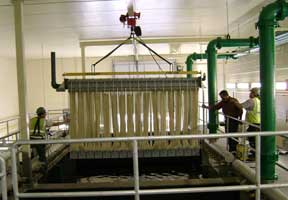For nearly ten years, Prairie Rivers Network has been working on strengthening our state’s antidegradation law. This law was designed to prevent degradation of clean waters through the promotion of new and innovative water pollution reduction technologies. Prairie Rivers Network was involved in the passing of the law in 2002, and since that time has been helping Illinois communities develop creative solutions to keep pollution out of their waterways.
One form of assistance we offer is education. Prairie Rivers Network has developed several tools for the lay person and the professional. Our guidebooks are accessible to all, with illustrations, examples, and simple explanations of technologies for reducing pollution from sewage treatment plants and polluted runoff from cities. For professionals, we developed a technical document that provides vital information on state-of-the-art sewage treatment methods.
Prairie Rivers Network is also working hand-in-hand with communities that are building new or redesigned pollution treatment plants to achieve a variety of advances in clean water. For instance, we worked closely with the villages of Chatham and New Berlin on the site plans for a new drinking water treatment plant in the Sangamon River Valley. Because the Sangamon River is already polluted by too much sediment carried to the river by stormwater and erosion, we developed a plan to keep sediment on the site by using landscape features that allow stormwater to soak into the ground. The plan includes use of porous pavement, bioswales, a bioretention area, native plantings and no-mow areas, as recommended in our stormwater management guidebook.
In another case, Prairie Rivers Network, the Village of Mokena and the Sierra Club developed a joint solution to the Village’s need to expand its sewage treatment plant due to population growth. The Village will use an innovative method to remove nitrogen and phosphorus pollution from its sewage, relying on microscopic bugs that essentially eat the pollution, rather than using chemicals that can be environmentally harmful. The Village has accepted a strict water pollution permit and has agreed to regularly monitor the health of the East Branch of Marley Creek where the treated wastewater is dumped. The Village has also agreed to reuse some of its wastewater for irrigation and will work on educating community members on proper disposal of unwanted medications and responsible fertilizer use.
These are just two examples of progressive approaches to prevent degradation. There are many others. Prairie Rivers Network believes the antidegradation law is an essential tool for safeguarding clean water, and will continue to use it to guide others along the path of innovation to clean, healthy Illinois waters.








